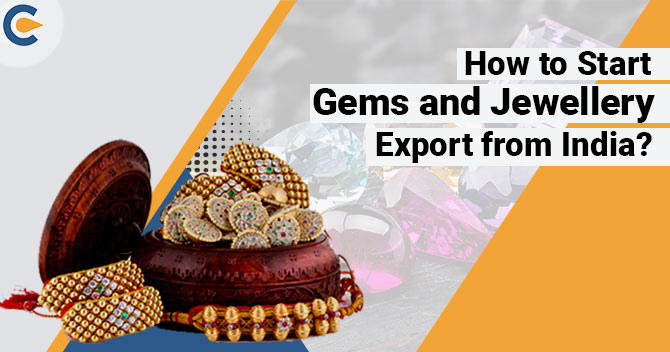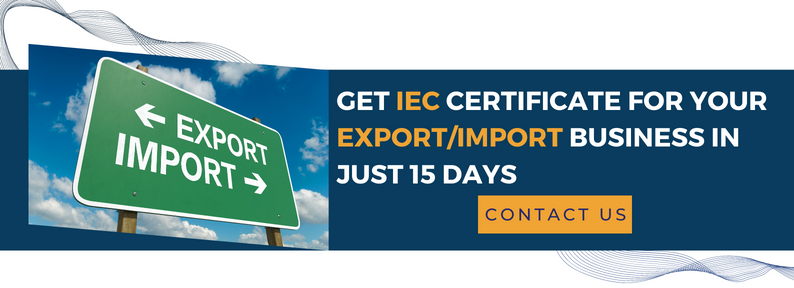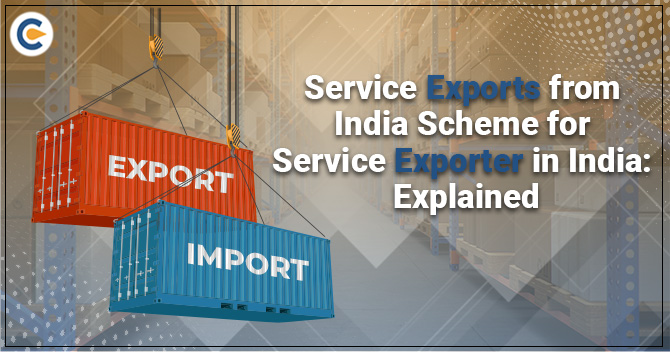As of Feb 2021, India’s gems and jewellery trade contributed ~7.5% to the nation’s GDP & 14% to overall merchandise exports. The gem & jewellery sector is projected to create 8.23 million jobs by 2022, from 5 million in 2020. Based on its potential for value addition & growth, the GOI declared the gems sector as the critical area for export promotion. The Indian Government has undertaken plenty of measures in the recent past to promote investment & improved technology and skills to incentivize brand name in the global market. Moreover, the GOI has also allowed 100% foreign direct investment in the sector via an automatic route, wherein overseas investors or Indian entities do not require any approval from RBI or GOI. Owing to these reasons, the gems and jewellery export business is witnessing a sharp growth spike, which entices new entrants and starts up to venture into this business domain.
How Profitable Is The Business Of Gems And Jewellery Export In India?
Have a glance over the following gems and jewellery export data which would give a better idea of the growth potential of this sector.
- In FY2021, the exportation of gems & jewellery attained a total valuation of US$ 25.30 billion. In March 2021, the export valuation of this sector stood at US$ 3.42 billion. In May 2021, our nation shipped gems and jewellery worth US$ 2.4 billion, which is nearly three times the figure achieved in the preceding year of the same month.
- In Sep 2020. The United States secured the first position in terms of import of gems by posting the revenue of US$ 938.54 million from India, followed by Hong Kong (33%) & the United Arab Emirates (13%).
- In the financial year 2021, the overall valuation of import of gems stood at US$ 16.49 billion; meanwhile, the import of gold jewellery posted US$ 262.25 million from Apr 2020 to Feb 2021.
- In May 2021, our nation managed to post the import valuation worth US$ 1,716.64 million, which is approximately five times the revenue generated in the previous year of the same month.
- In the upcoming years, the growth in the gems & jewellery sector would likely be triggered by the development of large brands/retailers. Well-established brands are helping the organized market & are creating opportunities to develop further.
- The ever-increasing penetration of the organized contenders facilitates variety in terms of design and products; web-based sales are projected to account for 2% of the fine jewellery segment by FY 2021–22. Besides, the exemption on the gold import is likely to relieve the burden on the industry. The demand for gems is projected to be considerably supported by the recent positive development in the jewellery sector.
Legalities for Commencing Gems and Jewellery Export in India
Exporting activities revolve around plenty of legal implications and mandatory requirements. The section below contains the list of necessary certifications and permits that one has to avail of before venturing into the EXIM business.
Company Registration
Company registration or incorporation is the fundamental requisite for any start-up looking to start their business journey in a legalized way. Have a glance over the popular business structures in India:
- OPC (offer better flexibility to the single owner owing to the better liability fencing)
- LLP (perfect for businesses that proposed to be served by multiple partners)
- Private Limited Company (arguably the most popular business structure in India)
- Public Limited company (suitable for businesses having the larger scope of operation)
- Partnership firm (encounter minimal post-registration compliances)
The key point to ponder before getting involved with the incorporation process
- Registrar of Firm (aka ROF) of the respective state has been vested with the right to grant the registration to the partnership firms. Every entity functioning as a partnership firm in India must abide by the rules cited under the Partnership Act, 1932.
- LLP, i.e. Limited Liability Partnership, is a business structure that is obligated to function in accordance with the provisions of LLP Act, 2008.
- Company Act, 2013 governs the business structures like OPC, Private limited and public limited company in India. Entities willing to incorporate under such business forms must procure DIN and DSC from the relevant sources recommended by the MCA.
Apply for PAN
All businesses are mandated to avail Permanent Account Number (PAN granted by the IT department against duly-filed prescribed form. It would help the companies to open a current account in the designated banks and avail of IEC from the DGFT.
Open a Bank Account & obtain Authorized Dealer Code
The next step that the applicant should take is opening the current account with the bank having rights to deal with Foreign Exchange. Authorized Dealer Code (AD code), on the other hand, is granted by the bank with which your firm has a current account. Every exporter is mandated to register an AD at every shipping port where the goods are cleared by customs.
Import Export Code
IEC Registration refers to a ten-digit identification code that helps identify business owners engaged with the EXIM business. The custom authority requires it for validation purposes, and without it, no shipment would be cleared from the docks. Every export house in India must have this certification at their disposal to undertake Exim related undertaking without any legal hassles. Import Export Code is granted by the DGFT that functions under the aegis of the Indian Government. To avail this certificate, the applicant needs to file an online application on the DGFT portal. During the final stage of application filing, the applicant would be routed to the payment gateway for the fee submission.
Register the AD code
After availing of IEC from DGFT[1], make to register an AD code at ports where your shipments is expected to arrive for custom clearance. The custom authority uses AD code to generate shipping bills via a dedicated portal, viz Ice Gate portal. Furthermore, this code helps the exporter to avail prompt payment from the buyers.
Consent from Gems And Jewellery Export Promotion Council
The gems and jewellery export promotion council does all its undertakings under the aegis of the Ministry of Commerce & Industry. The institution was come to effect to make domestic players globally competitive by raising the bar of quality of the products meant for the international market. Furthermore, this institution comes up with different measures every now and then to incentivize the gems and jewellery industry in India.
BIS certificate (for Manufacturer cum exporter)
The BIS hallmark is a standardized hallmarking system for gold & silver jewellery. It indicates the purity of the metal and hence assures peace of mind for the customers. Hallmarking system conforms to a set of norms underpinned by the Bureau of Indian Standards. Products with BIS certification have better recognition in the international market, and thus gems exporters must avail this certificate before shipping their product abroad.
What is the typical jewellery export procedure?
- Product Selection
- Market Selection and Buyer Identification
- Secure an Export Order
- Initiate Manufacturing operation
- Conduct Quality Checks
- Obtain CIO (Certification of Origin)
- Avail marine insurance to secure Shipment
- Send Shipment to the port
- Deal with Custom formalities via Clearing House Agent
- Submit mandatory documents to the importer and the bank
- Realization of Export Proceeds
- Avail credit risk insurance from ECGC
An Overview on Harmonized System Codes for Gems and Jewellery
The Harmonized System refers to a standardized numerical method of categorizing traded items. The HS codes are utilized by custom agencies worldwide for product identification while assessing taxes & duties for accumulating statistics. World Customs Organization (WCO) administers the Harmonized System, and it is updated after every five years. The Harmonized System assigns 6-digit codes for different commodities & classifications. Nations are permitted to append longer codes to the first six digits for further classification. Gems & Jewellery products come under Chapter 7.
Conclusion
Gems and jewellery export business is on the rise owing to the massive international demand and incredible shift in the manufacturing techniques. According to export data, the demand for Indian-made jewellery is likely to escalate many folds in the near future. Thus, it is the right time to venture into this business domain and starts the business of Gems and jewellery export in India.
Read our article:DGFT Unveils E- Tariff Rate Quota for Imports













